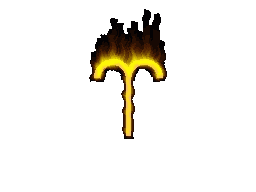
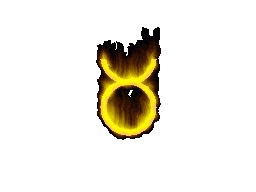
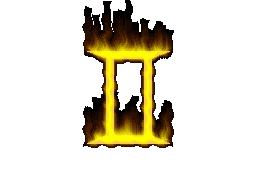
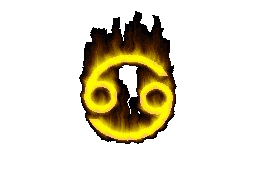
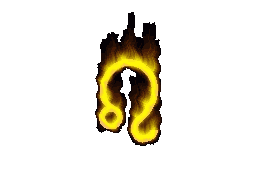
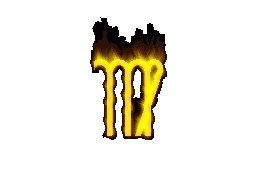
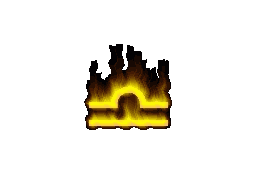
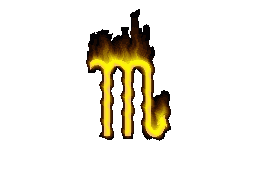
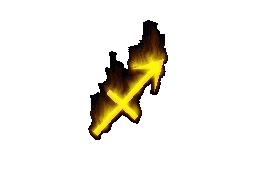
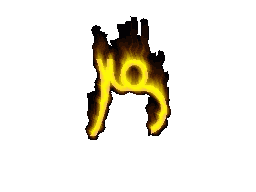
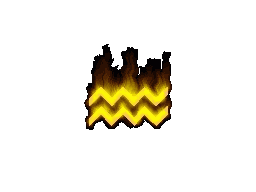
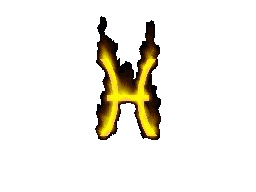
























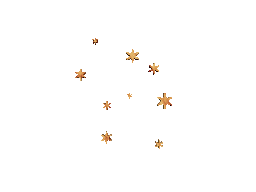 A study completed in 2003 in the UK purportedly "proved" that astrology had no basis in fact. These researchers obviously lost their objectivity in the desire to disprove astrology, for they based their whole research upon a false premise. If these researchers had investigated their topic thoroughly, they would have acknowledged the existence of sidereal astrology and designed a more comprehensive program to investigate the validity of astrology. However, they failed to do so and thereby failed before the project had even begun. The subjects of this study were born on March 9 and expected to have Piscean traits, but did not. That's no surprise to a sidereal astrologer who would expect these subjects to have Aquarian traits, as the Sun is set against the backdrop of Aquarius on this date each year.
A study completed in 2003 in the UK purportedly "proved" that astrology had no basis in fact. These researchers obviously lost their objectivity in the desire to disprove astrology, for they based their whole research upon a false premise. If these researchers had investigated their topic thoroughly, they would have acknowledged the existence of sidereal astrology and designed a more comprehensive program to investigate the validity of astrology. However, they failed to do so and thereby failed before the project had even begun. The subjects of this study were born on March 9 and expected to have Piscean traits, but did not. That's no surprise to a sidereal astrologer who would expect these subjects to have Aquarian traits, as the Sun is set against the backdrop of Aquarius on this date each year.
Whilst my astrological columns and annual feature articles are based on tropical astrology because the media powers that be expect it, all my personal and mundane work is based on the sidereal zodiac using a whole sign system. At the start of a reading, I explain the difference between the two zodiacs in simple terms, indicating that I use the sidereal zodiac. Whilst these clients were initially surprised at the new astrological tag, the majority stated that they didn't relate to their previous tropical tag. Similarly, these people also said that they generally related to the newspaper predictions for the star sign preceding their own (in the tropical system). When I do find someone who is greatly attached to their tropical identification tag, there is a reason for it such as Moon or Ascendant in that sign, stellium of planets or some other planetary placement by house position.
This is not denying that Western Astrology has value, because there are wonderful techniques that can continue to be applied using the sidereal chart. One thing is true, that astrological logic is universal and once understood at first principles, there is no need for learning rules by rote. In fact, if one wanted to venture further into astrological knowledge and expertise, no journey would be complete without exploring the potential of the sidereal zodiac - the switch is very simple. The sidereal zodiac is the same one employed by modern day astronomers, and all that's required is to continue using techniques already learned, but in a sidereal environment. I, personally, apply the fundamentals of western and Vedic logic in chart interpretation, giving a clear, rich picture of people and events.
 When we look at the background to the two zodiacs, the associated history and mathematics, it makes sense in this day and age to use the sidereal alternative. Roughly once every 25,000 years the two zodiacs align, the last time being around 285 AD. One zodiac is based around the ecliptic, the other around the celestial equator. One begins at the juncture of the constellations Pisces and Aries; the other begins at the Northern Spring Equinox. Because of something called the "Precession of the Equinoxes", created by a wobble in the earth's axis, the first point of the tropical zodiac moves backwards against the sidereal system at the rate of approximately one degree every seventy years.
When we look at the background to the two zodiacs, the associated history and mathematics, it makes sense in this day and age to use the sidereal alternative. Roughly once every 25,000 years the two zodiacs align, the last time being around 285 AD. One zodiac is based around the ecliptic, the other around the celestial equator. One begins at the juncture of the constellations Pisces and Aries; the other begins at the Northern Spring Equinox. Because of something called the "Precession of the Equinoxes", created by a wobble in the earth's axis, the first point of the tropical zodiac moves backwards against the sidereal system at the rate of approximately one degree every seventy years.
To the human perspective all this means is that through the different ages, each lasting a little more than two millennia, a different constellation rises heliacally at the northern spring equinox. The change is very slow and gradual, but has defined epochs. For example, the lamb and the fish represented the Christian era as the northern spring equinox passed through from the constellations from Aries to Pisces; the Age of Horus was defined by the heliacal rising of the constellation "Horus" (a combination of the Hyades with Taurus) in early Egyptian times. [Diagram on Age of Horus].
Currently, the two systems overlap by approximately seven degrees and are separating. The implications for modern western astrology are that 75% of planetary positions are in the previous star sign. Translating this information to common understanding means that 75% of people born in one sign actually belong to the preceding sign. Currently, only those people born in the last week of a tropical sign are genuinely that sign. The dates for each star sign, based on the sidereal zodiac, currently run from mid-month to mid-month [see Table]. 
At the time Vedic astrological wisdom was being developed, purportedly as far back as 5,000 BC, the two systems were not aligned. Their association of earthly events with stellar configurations was broadly based on the constellations themselves, for they did not have access to the whiz bang technological precision our computer age offers. This Vedic system works superbly despite the non-alignment of the two zodiac systems. Sensibly, they continue to use the sidereal zodiac.
In the Vedic system, anything in the same sign is in conjunction: the closer the two planets together, the stronger the effects. They also have a wonderful system of yogas (unions) and karakas (rulers) that determine whether an aspect produces negative or positive affects, regardless of whether the aspect is dynamic or otherwise. A richness is added by their Nakshatras (lunar house system); fabulous understanding of the Moon's nodes, and Rasi, Bhava and harmonic charts, the most well known of these being the ninth harmonic Navamsa chart. The Chandra Lagna (Moon rising chart) has as much value in interpretation as the solar chart, both being stunningly accurate when cast in the sidereal zodiac.
 The Greeks developed the Western system of interpretation at a time when the two zodiacs were approaching a total alignment. This system therefore lacks the ability to cope with non-alignment of the two zodiacs due to unavoidable restrictions in gathering comprehensive, empirical data. As modern astrologers, we are now in a unique position to take the best from Greek and Vedic wisdom and combine it with the latest technology. Truly, it is time western astrologers considered such a path by adopting the sidereal zodiac, in light that the alignment of the two zodiacs is a rare phenomenon indeed. In so doing, we will be able to answer our critics and provide stunningly accurate insights into personality and future trends.
The Greeks developed the Western system of interpretation at a time when the two zodiacs were approaching a total alignment. This system therefore lacks the ability to cope with non-alignment of the two zodiacs due to unavoidable restrictions in gathering comprehensive, empirical data. As modern astrologers, we are now in a unique position to take the best from Greek and Vedic wisdom and combine it with the latest technology. Truly, it is time western astrologers considered such a path by adopting the sidereal zodiac, in light that the alignment of the two zodiacs is a rare phenomenon indeed. In so doing, we will be able to answer our critics and provide stunningly accurate insights into personality and future trends.
Another reason to consider the advantages of the sidereal zodiac is based purely on mathematical and forecasting accuracy. Whilst the reasons for this are less important for progressed charts, there are huge problems in using a tropical chart with transiting planetary positions. This is due to the part played by the precessional movement rate of one degree every seventy years, throwing predications out by hours based on lunar transits, inner planets by days and weeks, and outer planets by weeks and months. The older we get, the greater the error. By our mid-thirties, this difference is half a degree and, by our seventies, is one degree. Where forecasting is concerned, this has to be considered substantial. The problem is that whilst we expect a consistent ephemeral rate using the tropical zodiac, it doesn't provide us with one. However, the sidereal zodiac does because of its fixed frame of reference.
The advantages of the sidereal zodiac can be clearly seen in the following example. The chart is of an adult male who suffered from a cerebral aneurysm in mid-2000 and who fortunately survived. Using the sidereal zodiac the aneurysm was forecast, and occurred during one of three potential "trigger" periods. 
In the sidereal chart, Uranus, Saturn and Jupiter are all in Aries, opposed by a threatening Mercury, which is the ruler of the eighth house of death. In the tropical system, Mercury does not carry the same significations, whilst the change of sign between the two systems shifts the emphasis from the head (Aries, in sidereal) to neck (Taurus, in tropical). Saturn in Aries is badly placed and is fallen (neecha), indicating trauma to the head region. In fact, this person has substantial scarring to the head due to a number of car accidents over the years. He also has a family history of stroke. Uranus, ruling arteries, is also placed in Aries, suggesting arterial problems in the head and risk of sudden death from it, due to the opposition with Mercury.
At the time of the cerebral haemorrhage, there was a plethora of aspects forming, with the most significant of these being progressed Mercury opposition the radical Mercury Uranus midpoint. Progressed Moon and transiting Uranus were also forming a conjunction with progressed Mercury, and aspecting the natal Mercury-Uranus configuration. Furthermore, there was a lunar eclipse in Sagittarius within four days following the operation, trining natal Uranus and generating fears of post-operative cerebral bleeding. This in fact occurred, necessitating further surgery.
 When 75% of people with this condition die, this man was certainly blessed. Looking at his chart there are some very powerful indications of survival. Just on rulerships alone, attained through the sidereal system, those of the most fortunate houses (belonging to Jupiter and the Moon) were aspecting the natal Ascendant on the morning of the operation. However, the real depth to the picture comes through use of Vedic principles: Jupiter and Saturn are raja yoga in his sixth house, whilst Sun and Moon are raja yoga in his first house. Despite the fallen status of both the Moon and Saturn, these yogas are highly powerful, beneficial and protective. The progressed aspect of the Moon, indicated through western techniques, not only assisted in catalysing the event, but also endowed access to quality medical treatment and ensured survival. The exalted status of the Lunar North Node (Rahu) in Virgo, contributed its share of blessings, endowing a long life. The advantages of the western system also come into play because progressed Venus sextiled radical Mercury at the time, completing the picture for a favourable prognosis.
When 75% of people with this condition die, this man was certainly blessed. Looking at his chart there are some very powerful indications of survival. Just on rulerships alone, attained through the sidereal system, those of the most fortunate houses (belonging to Jupiter and the Moon) were aspecting the natal Ascendant on the morning of the operation. However, the real depth to the picture comes through use of Vedic principles: Jupiter and Saturn are raja yoga in his sixth house, whilst Sun and Moon are raja yoga in his first house. Despite the fallen status of both the Moon and Saturn, these yogas are highly powerful, beneficial and protective. The progressed aspect of the Moon, indicated through western techniques, not only assisted in catalysing the event, but also endowed access to quality medical treatment and ensured survival. The exalted status of the Lunar North Node (Rahu) in Virgo, contributed its share of blessings, endowing a long life. The advantages of the western system also come into play because progressed Venus sextiled radical Mercury at the time, completing the picture for a favourable prognosis. 
© Copyright, Alison Moroney, 2003
First published in the February issue of "Astrological Monthly Review", Dengar Publications, Sydney, January 2003.